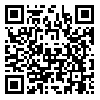Volume 17, Issue 1 (Vol 17,No.1, Spring 2021 2021)
irje 2021, 17(1): 34-46 |
Back to browse issues page
Download citation:
BibTeX | RIS | EndNote | Medlars | ProCite | Reference Manager | RefWorks
Send citation to:



BibTeX | RIS | EndNote | Medlars | ProCite | Reference Manager | RefWorks
Send citation to:
Darvishi A, Emamgholipour Sefiddashti S, Rajabi M, Mehrolhassani M, Yazdi Feyzabadi V. Investigating Appropriate Threshold for Measuring the Occurrence and Intensity of Households' Exposure to Catastrophic Health Expenditure in Iran. irje 2021; 17 (1) :34-46
URL: http://irje.tums.ac.ir/article-1-6928-en.html
URL: http://irje.tums.ac.ir/article-1-6928-en.html
1- PhD Candidate, Health Services Management Research Center, Institute for Futures Studies in Health, Kerman University of Medical Sciences, Kerman, Iran
2- Associate Professor, Department of Management Science and Health Economics, School of Public Health, Tehran University of Medical Sciences, Tehran, Iran
3- Msc Student, Department of Management Science and Health Economics, School of Public Health, Tehran University of Medical Sciences, Tehran, Iran
4- Associate Professor, Medical Informatics Research Center, Institute for Futures Studies in Health, Kerman University of Medical Sciences, Kerman, Iran
5- Assistant Professor, Social Determinants of Health Research Center, Institute for Futures Studies in Health, Kerman University of Medical Sciences, Kerman, Iran
2- Associate Professor, Department of Management Science and Health Economics, School of Public Health, Tehran University of Medical Sciences, Tehran, Iran
3- Msc Student, Department of Management Science and Health Economics, School of Public Health, Tehran University of Medical Sciences, Tehran, Iran
4- Associate Professor, Medical Informatics Research Center, Institute for Futures Studies in Health, Kerman University of Medical Sciences, Kerman, Iran
5- Assistant Professor, Social Determinants of Health Research Center, Institute for Futures Studies in Health, Kerman University of Medical Sciences, Kerman, Iran
Abstract: (2023 Views)
Background and Objectives: Fair financial protection against health expenditures is one of the most critical goals of health systems. This study was conducted to investigate the most appropriate threshold for measuring the exposure to catastrophic health expenditure (CHE) in Iran.
Methods: The present study was conducted using 2018 national household income and expenditure data of the Iran statistics center. The occurrence and intensity of the households' exposure to CHE at different thresholds and for economic quintiles was measured using two World Health Organization (WHO) and World Bank (WB) methodologies. The most appropriate threshold for each methodology was also determined using the Kappa statistics adaptation estimation.
Results: The occurrence of households’ exposure to CHE was 3.02% and 8.51% in urban households and 4.66% and 9.22% in rural households, respectively. According to asset quintiles, the highest occurrence was in the first quintile and the lowest in the fifth quintile. In addition, the results of adaptation estimation based on Kappa statistics showed that a threshold of 40% in the WHO methodology and 25% in the WB methodology were the most appropriate thresholds.
Conclusion: The results showed a relatively high rate of exposure to CHE. CHE occurrence was also more in poorer households, and common thresholds were the most appropriate thresholds for estimating CHE.
Methods: The present study was conducted using 2018 national household income and expenditure data of the Iran statistics center. The occurrence and intensity of the households' exposure to CHE at different thresholds and for economic quintiles was measured using two World Health Organization (WHO) and World Bank (WB) methodologies. The most appropriate threshold for each methodology was also determined using the Kappa statistics adaptation estimation.
Results: The occurrence of households’ exposure to CHE was 3.02% and 8.51% in urban households and 4.66% and 9.22% in rural households, respectively. According to asset quintiles, the highest occurrence was in the first quintile and the lowest in the fifth quintile. In addition, the results of adaptation estimation based on Kappa statistics showed that a threshold of 40% in the WHO methodology and 25% in the WB methodology were the most appropriate thresholds.
Conclusion: The results showed a relatively high rate of exposure to CHE. CHE occurrence was also more in poorer households, and common thresholds were the most appropriate thresholds for estimating CHE.
Keywords: Occurrence of catastrophic health expenditure (CHE), Intensity of CHE, Inequality, Appropriate Threshold, Kappa statistics
Type of Study: Research |
Subject:
Epidemiology
Received: 2021/08/20 | Accepted: 2021/05/31 | Published: 2021/05/31
Received: 2021/08/20 | Accepted: 2021/05/31 | Published: 2021/05/31
attachement [PDF 610 KB] (179 Download)
| Rights and permissions | |
 |
This work is licensed under a Creative Commons Attribution-NonCommercial 4.0 International License. |





